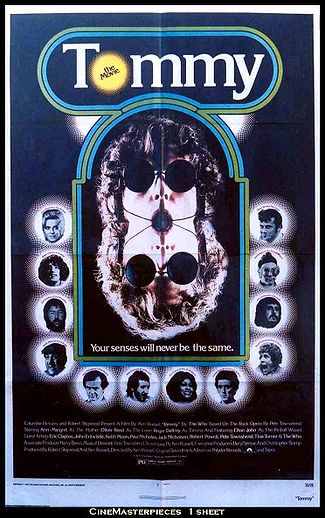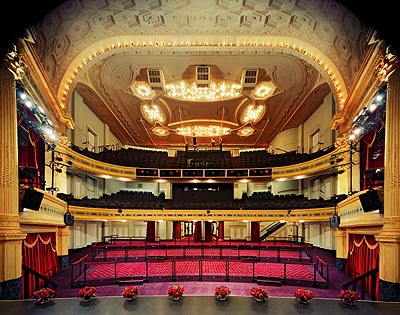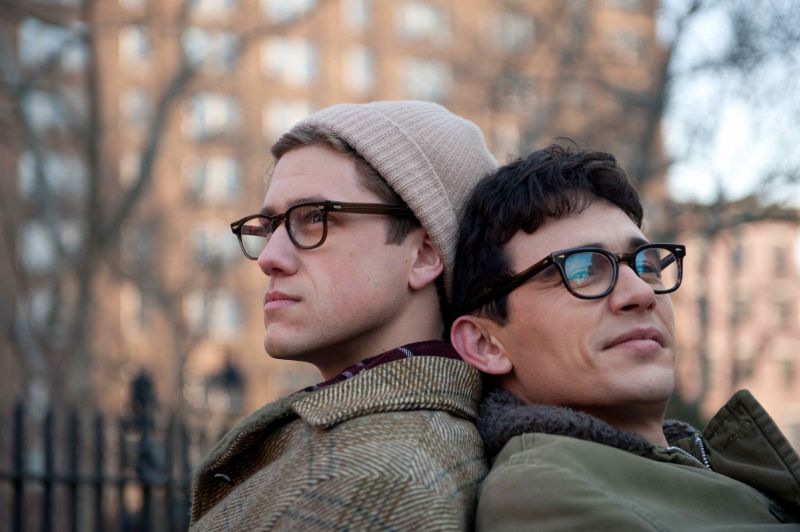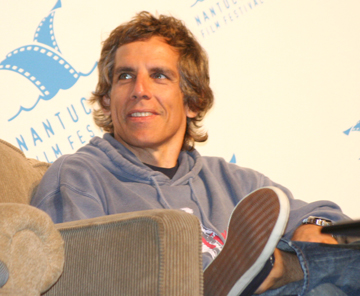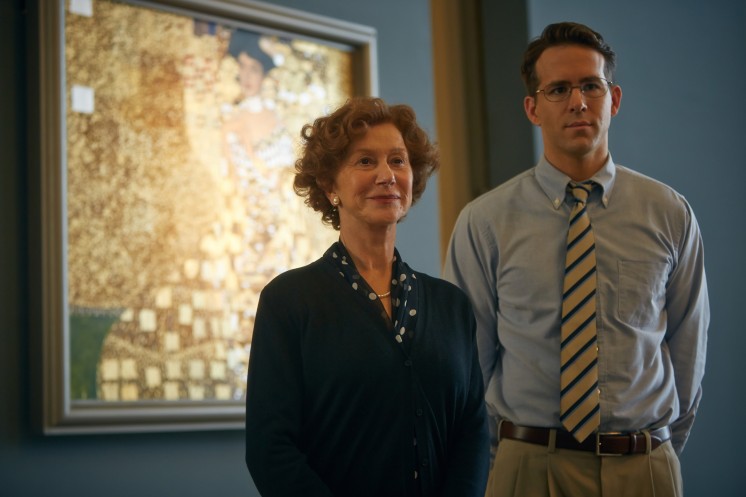
Woman in Gold, like The Wizard of Oz, is the story of a niece on a quest to regain family property after a storming. It has good and evil conjurers and even a straw man. Yet, contrary to the Kansas reverie, Simon Curtis's new film begins in a fairyland and flashes forward and backward among cloudier realms.
First comes Vienna, Austria. It's 1907 and artist Gustav Klimt (Moritz Bleibtreu) is feverishly gilding the masterwork referenced in the film's title, Portrait of Adele Bloch-Bauer I. Cut to late-90's Los Angeles, where octogenarian Maria Altmann (Helen Mirren) sets about a process to reclaim family possessions confiscated by the Nazis -- the crown jewel of which is that very painting of her Aunt Adele. Viel Glück. Considered "Austria's Mona Lisa," it's a fixture of the national Belvedere Gallery and the stuff of refrigerator magnets.
Skip back six decades to Hitler's 1938 annexation of Austria, as anti-Semitic policies are dooming Jewish life, including Altmann (Tatiana Maslany) and her family's. In a subsequent flashback, she and her new husband Fritz (Max Irons) flee their native Vienna. Reprising the recent present, Altmann presses her case with the aid of young California lawyer E. Randol Schoenberg (Ryan Reynolds), grandson of Austrian composer Arnold.
How do you solve a problem like Maria Altmann? If you're the Republic of Austria, you dig in your heels and insist that Adele Bloch-Bauer willed the disputed possessions to Austria: another portrait of her and three landscapes, all by Klimt. If you're rooting for team Altmann, you adduce evidence to show that said possessions were never Adele's to give.
As it turns out, that was the prerogative of her husband, Altmann's Uncle Ferdinand Bloch-Bauer, a sugar magnate who bankrolled the family's art and palatial lifestyle. Credit in cracking these well-kept secrets in no small way goes to progressive journalists such as Profil magazine editor Hubertus Czernin. Played by Daniel Brühl, he's instrumental in prying open the Austrian archives. There documentation fetches up that the Austrian government had illegally appropriated the Nazi-swindled art. It's also revealed that, far from donating the work to Austria, Uncle Ferdinand had bequeathed it to Altmann and her siblings.
Setbacks abound, not least of which is Austria's requirement that the plaintifs pony up nearly $2 million in escrow, which leads Schoenberg (working on a contingent fee basis) to shy away from its national courts. He seizes on the merchandising of Belvedere spin offs in the US as a legal leg to stand on. Though the odds remain appalling for Altmann and Schoenberg, they take the case all the way to the Supreme Court and win. So it's on to the next front: Republic of Austria v. Altmann. In 2006, six years into their David-and-Goliath battle, the Austrian-American hyphenates return to Vienna for a final round, where their efforts pay off big time.

Just as Altmann left her native land, so too the glittering portrait crosses the Atlantic. Cosmetics magnate Ronald Lauder snaps it up for a record $135 million dollars, with Mr. Schoenberg utlimately bagging $120 million after Christies sells off the rest of the recovered stash. In keeping with Altmann's wishes that The Portrait of Adele Bloch-Bauer I be on permanent public display, it now hangs at Lauder's Neue Galerie museum in New York.
The Woman in Gold too has ambitions for its viewership: a recognition that provenance of objects and beings matters. Alexi Kaye Campbell's screenplay poses a basic question: if you were yanked from your roots, who would you be and how would you reconcile your original identity? Where do you really belong?
To which Simon Curtis, in a sit-down with me in New York, came back with a query and reply of his own: "Is Maria American or is she Viennese? She seemed to define herself in America as Viennese -- the strudel, the accent..." The British director generously shared his insights about language and identity, and soon one question led to another:
SC: For me it was very important to play the past in German because Maria grew up in Vienna speaking German and then had to reinvent herself in America speaking English. I felt that language as part of identity is very important. And it's very symbolic that the Germans changed the title of the painting because "Adele Bloch-Bauer" was too Jewish a name for the painting to have.
Q: The current issue of The Atlantic has a piece entitled, "Is It Time for the Jews to Leave Europe?" While making the film, did you ever imagine its timeliness?
SC: We could never have predicted when we started making this film four or five years ago that we'd be in such a delicate, dangerous moment at the time of its release. It just seems a shockingly timely reminder of the perils of anti-Semitism at a time when you hear stories of Parisian Jewish families leaving. I was reading today that Michael Douglas's son was the victim of an anti-Semitic attack in Europe.
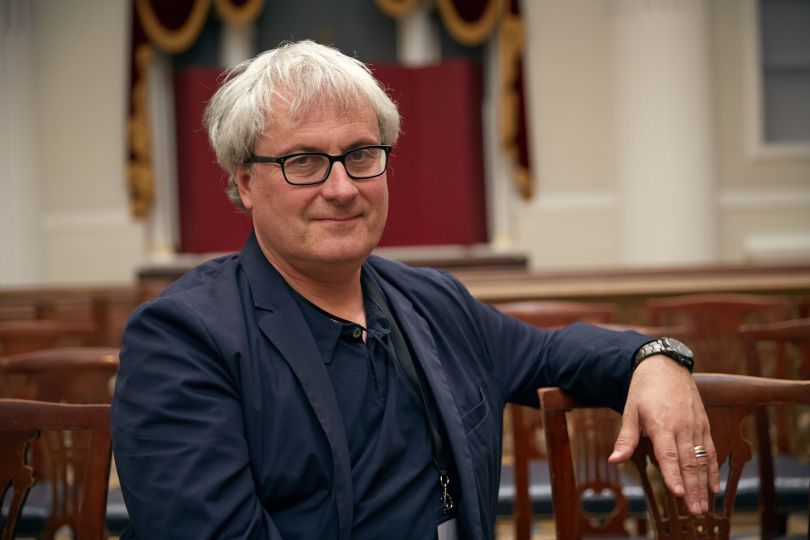
Q: Was there something about Altmann's refuge story that particularly resonated with you?
SC: I'm the product of a Jewish immigrant family in the UK, several generations away. My father's name was changed from "Cohen" to "Curtis" just as the Second World War was starting. In some way the film was a love letter to the American policy of immigration. I very much wanted this sense of, Maria goes from Ellis Island to the Supreme Court -- that one emigré who lives her whole adult life in the United States teams up with the grandson of another emigré and they take on this case in which they wouldn't have gotten that far without the American legal system. That silver cup that the Nazi holds up is actually my family's cup.
Q: In the film the elderly Altmann is reluctant to set foot on Austrian soil, although Randy Schoenberg tells me that she had already returned there several times. What were you going for in this characterization?
SC: It just feels emotionally true that she bottled it up and didn't want to take on that battle. We tried to get in our Maria a woman full of contradictions. It's natural that at one point she wants to resolve matters, and in another point she doesn't want to open up that Pandora's Box. That's what we were after, not one simple thing but rather lots of different things. One moment she says, "I'm not going back there ever again." And the next minute she's on the plane.
Q: Gregor Collins, who memorialized his three years caring for Altmann in The Accidental Caregiver (until her death at age 94), told me she was a cross between "Julia Child and Mary Poppins." Yet the Altmann we see is often peevish and contrarian. How did you come to shape your heroine? I'd like to read you what Collins said, and get your thoughts about it:
"She had a definite "edge" and an endearing naughty wit underneath her eyes, but I would never, ever describe what was behind her eyes as as profound anger. Behind her eyes -- at the deepest core -- was a doe-eyed purity that was infectious. What made her so special is that she had no ill will or hatred for anything in her past." She had terrible memories of the Nazis taking Fritz away, her father's death, their house arrest, all the suicides of the loved ones, etc....but she didn't like to dwell on them... The stories were never laced with bitterness or vitriol, more a sense of gratitude that they made it out alive, that they were the lucky few, and that they could start a new life."
SC: The Maria that Gregor knew was much older. Randy said his Maria wasn't like that at all.

Q: Let's talk about the Randy Schoenberg character in Woman in Gold and the Colin Clark character of your previous film, My Week with Marilyn, both of whom are no-name rookies when we meet them. How do these callow outsiders help us through the narrative? Are we the Colins and Randys?
SC: I certainly feel that I am. Each of those characters is a young man who gets a golden ticket to enter this world. I've gotten a golden ticket to work in the film business. I don't know if if that's what I'm drawn to about them or if it's a total coincidence. For me, Marilyn was always about this young man who saw Marilyn. In real life Randy is incredibly aware of his Jewish heritage and Vienna, but we deliberately wanted our Randy to be more an American kid who goes on a journey of discovery. We wanted this all-American guy who learns along with the audience the value of what his ancestors went through to get him where he is today.
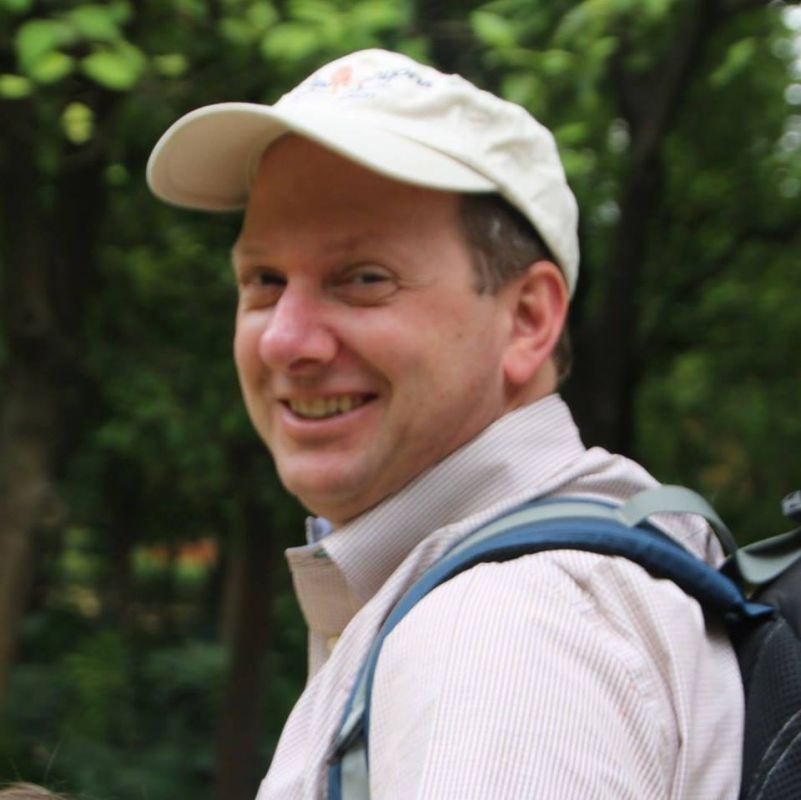
Q: A scene that's especially bittersweet is when Schoenberg and Altmann have just had a major triumph and Altmann says winning didn't do the emotional healing she'd hoped. Tell us about it.
SC: There was part of her that had this childish hope that it would bring back her parents and bring back the life. And of course it doesn't. So we wanted that bittersweet thing, and that was the impulse behind the scene where she goes back to the Elisabethstrasse home and imagines seeing everybody again. That was her reward, that moment we'd all love: one extra smile with our father.
Q: Aunt Adele expressed her wish to keep Portrait of Adele Bloch-Bauer I at the Belvedere. Is there something to be said for this intended bequest?
SC: That was when she loved Austria. It wasn't the country that denounced its Jewish community.
Q: To what extent was the production helped or hindered in Vienna?
SC: Definitely helped. They were really welcoming to us. We were allowed to do everything we wanted, even recreating those Nazi scenes. (Curtis shows me historic photos, including of a Jewish man being forced to paint "Jude" on a facade.) It was amazing to be in Vienna recreating these actual scenes.

Q: What impact do you anticipate the film might have regarding the restitution of Nazi-stolen art in Germany and Austria, which is thought to be in the order of 100,00 items?
SC: "Restitution" is quite a dusty word. I think the film brings home the personal side of it. It's a very extreme example. In this case Maria's uncle commissioned Klimt to paint her aunt, and it hung on the wall of their house. So it was a very particular personal story.
Q: You open that story as Klimt is literally illuminating Adele's likeness with gold leaf. What else did you want to shine light on?
SC: For me it is the story of the 20th century, because both Maria and the painting were created in Vienna at the start of the century, when it was arguably the greatest city in the world, the springboard for all these great ideas that dominated the century. And both of them ended up in the United States at the end of what was called the American Century -- the painting in New York and she in Los Angeles, the two cultural centers of the world."
Q: Had we eavesdropped on your conversations with production designer Jim Clay and cinematographer Ross Emery, what would themes would we have heard?
SC: You would have heard me giving them all these photographs and saying, "I want to recreate this world." You would have heard us talking about the three different time periods: the Golden Period of Adele and the young Maria; what I called the Bergman period, since Fanny and Alexander was my inspiration for the apartment and for this rich family life; and then modern America and Vienna. You would have heard us making sure that we pushed those apart without making it too disruptive.
Q: What determined the look of the different places and eras?
SC: There's something a bit desaturated about the past, though we wanted to avoid citing Schindler's List. And we wanted to make the modern scenes as naturalistic and real as possible.

Q: Daniel Brühl's Hubertus Czernin was one of the few Austrians who is portrayed sympathetically. Talk about that portrayal and how the film was received at the Berlin Film Festival.
SC: We played this film for 2,000 people in Berlin and it was a really thrilling night. The German audience absolutely loved it. One of the best characters in the film is the Daniel Brühl character. He's an unsung hero and a great Austrian. The Austrians in the end make what I feel is the right decision, so I feel the Austrians deserve to come out of this film well.


























